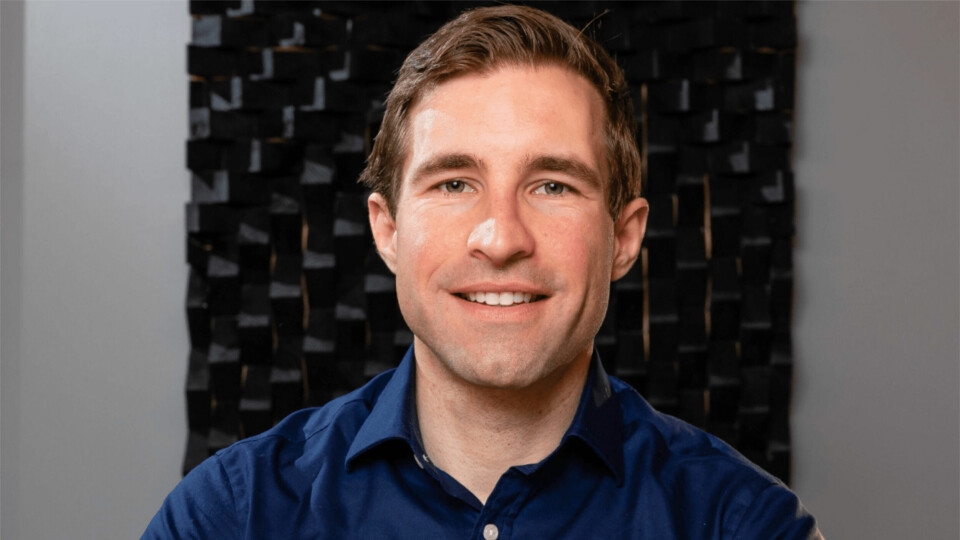
Fish farmers ‘must look to space for connectivity’
Fish farmers are being offered increasingly sophisticated technology to provide ever more data on their stock, but much of it is useless without a reliable internet connection which can be hard to find in remoter parts of Scotland.It’s time to take advantage of satellites, says Kevin Quillien, co-founder of communications scale-up R3-IoT and former head of the spacecraft design team at AAC Clyde Space, where he successfully led the delivery of several satellite projects into orbit for commercial customers. At R3-IoT, he has led on projects aimed specifically at the aquaculture sector.Here Quillien, who will be speaking at a panel session entitled ‘Solving the connectivity challenge and digitising aquaculture’ on Wednesday, May 4 at 2pm at Aquaculture UK, explains why salmon farmers should reach for the stars.
Aquaculture’s ambition to feed the world sustainably and affordably is as big and bold as they come. Not only do operations need to be as streamlined and efficient as possible, minimising the impact on the environment is also crucial. To achieve that goal, we need a better understanding of our waters than ever before, which means more and better data. Reliable connectivity – and going beyond that to make the most of data collected – is a must.
My background is in the space industry, and I’ve seen for myself the time and money invested into new satellite technology. What I don’t see enough of is an effort to leverage those satellites to help businesses on the ground. Aquaculture is a sector challenged by remote operations, so will benefit hugely from satellite technology to improve connectivity, digitise, and gain new insights that better data provides.
As co-founder of R3-IoT, I spend a lot of time with people working in aquaculture to hear first-hand the main barriers to digitisation, and connectivity is among the most common. Remote locations are hindered by unreliable or non-existent connectivity infrastructure – and if there is a significant data blind spot, how can critical business decisions be fully informed?
It’s time to look to space. By using satellites on orbit to enable digital transformation on the ground, we no longer need to count on local infrastructure. And by embracing digitisation with smart devices on the ground, like sensors, we can shine a spotlight on operational areas we currently don’t know enough about.
Why digitise?
Modern devices can measure metrics from water quality to equipment condition, and the resulting data can unlock more sustainable practices, improve feed efficiency and benefit fish welfare.
Take oxygen levels as an example. Ensuring correct oxygen levels within a pen is crucial – it directly impacts fish growth, mortality and overall welfare. Ideally, an operator would have constant and precise access to oxygen readings from any and every pen across their farms, providing them with the means to act quickly if a problem arises. Digitising the traditional way would require reliable connectivity coverage across all sites which is usually impossible – seamless satellite fallback removes local infrastructure constraints and enables digitisation anywhere and everywhere.
Utilising satellite technology can unlock large scale digitisation, so rather than being forced to ask ‘what do I currently know with the limited data I can collect at my sites?’, operators should ask themselves ‘what am I missing out on because of the data I CAN’T collect at my sites?’.
Cellular ‘is a roll of the dice’
I was keen that R3-IoT solve the challenge not just of connectivity, but fully resilient end-to-end data services. With more sites now further offshore, reliance on cellular is a roll of the dice – especially when extreme weather can knock out a network. The ability to leverage multiple communication technologies at once is vital, and when cellular service was recently knocked out across Western Scotland due to storms, our technology automatically switched to satellite to continue operating so the site we were working with in the area still received uninterrupted data from their assets.
Satellite connectivity alone isn’t enough to digitise. Data collection and communication is only one piece of the puzzle – interpretation of the data is where value is truly unlocked. Our Aquatics Platform has been developed to securely process, store, access, and visualise data that has been collected across all connected sites. This allows users of the platform to turn raw numbers collected and transmitted from farms into better, faster data-driven decisions that improve business outcomes.
Digitising can be daunting – determining what technologies to invest in, what metrics to measure, and what staff to train will all play a part in the success of a digitisation effort. Resilient connectivity and genuinely useful interpretation of data is what will lead to a new era in aquaculture – which is why we’ve worked hard to make both a reality.






















































